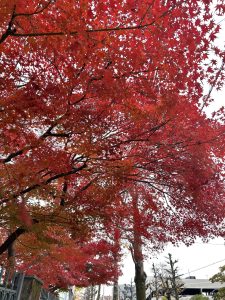お風呂の時間が楽しみな季節となりました(愛知県名古屋市千種区姫池通 骨董買取 古美術風光舎)
2024.11.26
皆さまこんにちは。スタッフHでございます。
寒さが増してきますとお風呂の時間が楽しみになってきますが、我が家ではお湯の設定温度を巡り、日々攻防が続いております。

日本人は世界でも類を見ないほどのお風呂好きと言われております。個人差はあると思いますが、日本人は他国に比べて毎日湯船につかる人の割合が非常に多く、湯船につかることをこんなにも愛する国民は稀だそうです。
ちなみに本日は11月26日で語呂合わせから「いいふろ」の日とされていますが、他にも風呂の日は沢山あり、よい風呂の日「4月26日」、源泉かけ流し温泉の日「5月26日」、露天風呂の日「6月26日」、夏風呂の日「7月26日」、パパ風呂の日「8月26日」、銭湯の日「10月10日」など。結構強引な感じもしますが、いかに日本人がお風呂に親しんでいるかがよく分かります。
古代ギリシャやローマでも公共の浴場が作られていましたが、現在はシャワーのみの入浴が好まれているとのこと。
それでは日本において浴槽入浴が好まれている理由は何なのでしょうか。いくつかある中で、まずお湯を沸かす水や燃料となる木材に恵まれていたことが大きいようです。日本は全国的に十分な降水量があり、どこでも木が育つ風土で国土の面積の67%が森林です。先進国の中ではフィンランドに次いで2番目に森林率が高いのだそうです。
また温泉の湧き出る土地が多いことも挙げられます。日本は活火山の数が多いうえ、複数枚のプレート上にあるという地理的な面から温泉が各地で湧き、温泉に入って病気を改善する「湯治(とうじ)」も古くから行われてきました。
そして水の質も原因ではないかと言われています。一般的に欧米の水はミネラルを多く含んだ硬水で、肌への負担が多いとされ、日本の軟水は肌に優しく長く浸かっていても肌荒れを起こすことが少ないようです。
日本におけるお風呂の歴史を調べて見ますと、日本で「入浴」が広がったのは、仏教の伝来がきっかけだと言われています。仏教では「入浴」は僧侶の体を清めるための大切な儀式でした。当時は蒸し風呂のような形で現在のサウナにに近いものだったようです。
平安時代には貴族たちの間で入浴の文化が発展しますが、毎日入浴する訳でもなく、水や湯を体にかける程度だったとのこと。そのため体臭を隠すために「お香」が流行しました。
鎌倉、室町時代になると商売として庶民向けのお風呂の営業が始まったと言われ、のちの「銭湯」に繋がっていきます。裕福な家では人を招いて入浴と酒をふるまうようになったとか。
そして江戸時代になると湯気が逃げないように洗い場と浴槽が分離した「ざくろ風呂」と呼ばれるものが流行し、これが銭湯の代表的な形式だったようです。朝から晩まで営業している銭湯もあり、値段も安かったため一日に何度もお風呂に入る人もいたとか。庶民の家庭でも大きな桶に湯を張って首までつかる仕組みの「すえ風呂」が広まりましたが火事を恐れて家にはお風呂を設けず、銭湯に通う人が多かったようです。銭湯は社交の場として人気でした。ただ銭湯の無い農村などでは密閉された風呂釜の中で少量の湯を沸かし蒸気で身体の汚れを落とすというスタイルだったようです。
様式は様々ですが、日本人の温泉、お風呂が好きという国民性は体に染みわたり、ずっと変わらないのでは思っておりましたら、最近若い人の間では「風呂キャンセル界隈」という言葉がトレンド入りしているとか。くたくたに疲れてお風呂に入る気力がなく入浴する回数が少ない人のことを指すようですが、女性タレントなどがSNSなどで入浴やシャワーの面倒さなどを発信し共感の声が止まないのだとか。最近の若者はそんなにも疲れているのかと驚いてしまいます。
最近増えてきた意見では、お風呂で石鹸を使って毎日洗うことで皮膚のバリア機能を失い、かえって肌荒れを起こすというものもあるようです。色々な情報が錯そうしていて何がいいのか分からなくなりますね。
個人的には深いお風呂に首までどっぷりとつかることに幸せを感じます。選択肢があるというのはある意味贅沢なことなのかもしれませんね。
それでは、また次の機会に。

Hello everyone. This is Staff H.
As the weather gets colder, we look forward to taking a bath, but at home, we are still fighting over the temperature setting of the bath water.
It is said that Japanese people are unparalleled bath lovers in the world. Although there are individual differences, the percentage of Japanese who take a bath every day is much higher than in other countries, and it is said that it is rare for a nation of people to love taking a bath so much.
Incidentally, today is November 26, which is also known as “good bath” day because of the combination of words, but there are many other bath days, such as “April 26” for a good bath, “May 26” for a source hot spring, “June 26” for an open-air bath, “July 26” for a summer bath, “August 26” for a bath for fathers, “October 10” for a public bath, and so on. October 10,” and so on. It may seem quite aggressive, but it clearly shows how much Japanese people are familiar with baths.
Even in ancient Greece and Rome, public bathhouses were built, but nowadays people prefer to bathe only in showers.
So what are the reasons for the preference for bathtub bathing in Japan? Among several reasons, first of all, Japan was blessed with abundant water and fuel wood. Japan has ample rainfall throughout the country, and 67% of its land area is forested, a climate that allows trees to grow everywhere. Among developed countries, Japan has the second highest percentage of forests after Finland.
Japan also has a large number of hot springs. In addition to the large number of active volcanoes, the geographical location of Japan on multiple plates has resulted in hot springs sprouting all over the country, and “Toji,” or hot spring cures for illnesses, have long been practiced.
The quality of water is also said to be a factor. Generally speaking, water in the West is hard water with high mineral content, which is considered to be hard on the skin, while soft water in Japan is gentle to the skin and rarely causes skin irritation even after a long soak.
A study of the history of bathing in Japan reveals that the spread of “bathing” in Japan is said to have been triggered by the introduction of Buddhism. In Buddhism, “bathing” was an important ritual for priests to purify their bodies. At that time, it was similar to today’s sauna in the form of a steam bath.
During the Heian period (794-1185), the culture of bathing developed among aristocrats, but they did not bathe every day, only pouring water or hot water over their bodies. Therefore, “incense” became popular to mask body odor.
In the Kamakura and Muromachi periods, it is said that baths for the common people began to be operated as a business, leading to the “sento” (public bathhouse) later on. Wealthy families began to invite people to bathe and serve them sake.
In the Edo period (1603-1867), the “pomegranate bath,” in which the washing area and bathtub were separated to prevent steam from escaping, became popular, and this seems to have been the typical form of sento. Some public bathhouses were open from morning to night, and since prices were low, some people bathed several times a day. The “sue-buro” style of bathing, in which the bathwater is poured into a large tub and people bathe up to their necks, became popular in the homes of ordinary people. Sento were popular as a place for socializing. However, in rural areas where there were no public bathhouses, a small amount of water was boiled in a sealed bath kettle and the steam was used to cleanse the body.
Although there are many different styles of bathing, Japanese people’s love of hot springs and baths is so ingrained in their bodies that I thought it would never change, but recently I heard that the term “bath cancellation neighborhood” is trending among young people. It seems that the term refers to people who are so tired that they do not have the energy to take a bath and do so infrequently. I am surprised that young people these days are so tired.
Some people say that using soap in the bath every day causes the skin to lose its barrier function, which in turn leads to rough skin. There is so much information out there that it is hard to know what is good for you.
Personally, I am happy to soak up to my neck in a deep bath. Having a choice may be a luxury in a sense.
I will see you next time.
*******************
ご実家の整理やお片付けなどをされている方のご相談などが多くございます。
お片付けなどくれぐれもご無理のないようになさってくださいませ。
風光舎では古美術品や骨董品の他にも絵画や宝石、趣味のお品など様々なジャンルのものを買受しております。
お片付けをされていて、こういうものでもいいのかしらと迷われているものでも、どうぞお気軽にご相談下さいませ。
また風光舎は、出張買取も強化しております。ご近所はもちろん、愛知県内、岐阜県、三重県その他の県へも出張いたします。
まずは、お電話お待ちしております。
愛知県名古屋市千種区姫池通
骨董 買取【古美術 風光舎 名古屋店】
TEL052(734)8444
10:00-18:00 OPEN
#出張買取#骨董#古美術#骨董品#絵画#版画#茶道具#刀剣#彫刻

